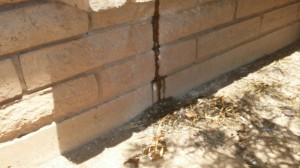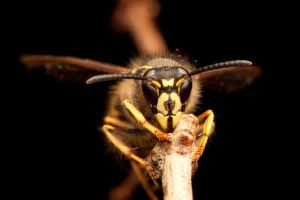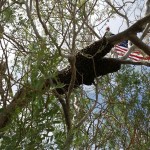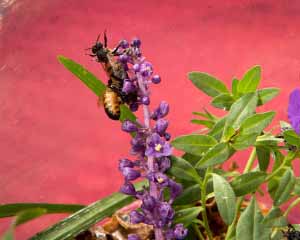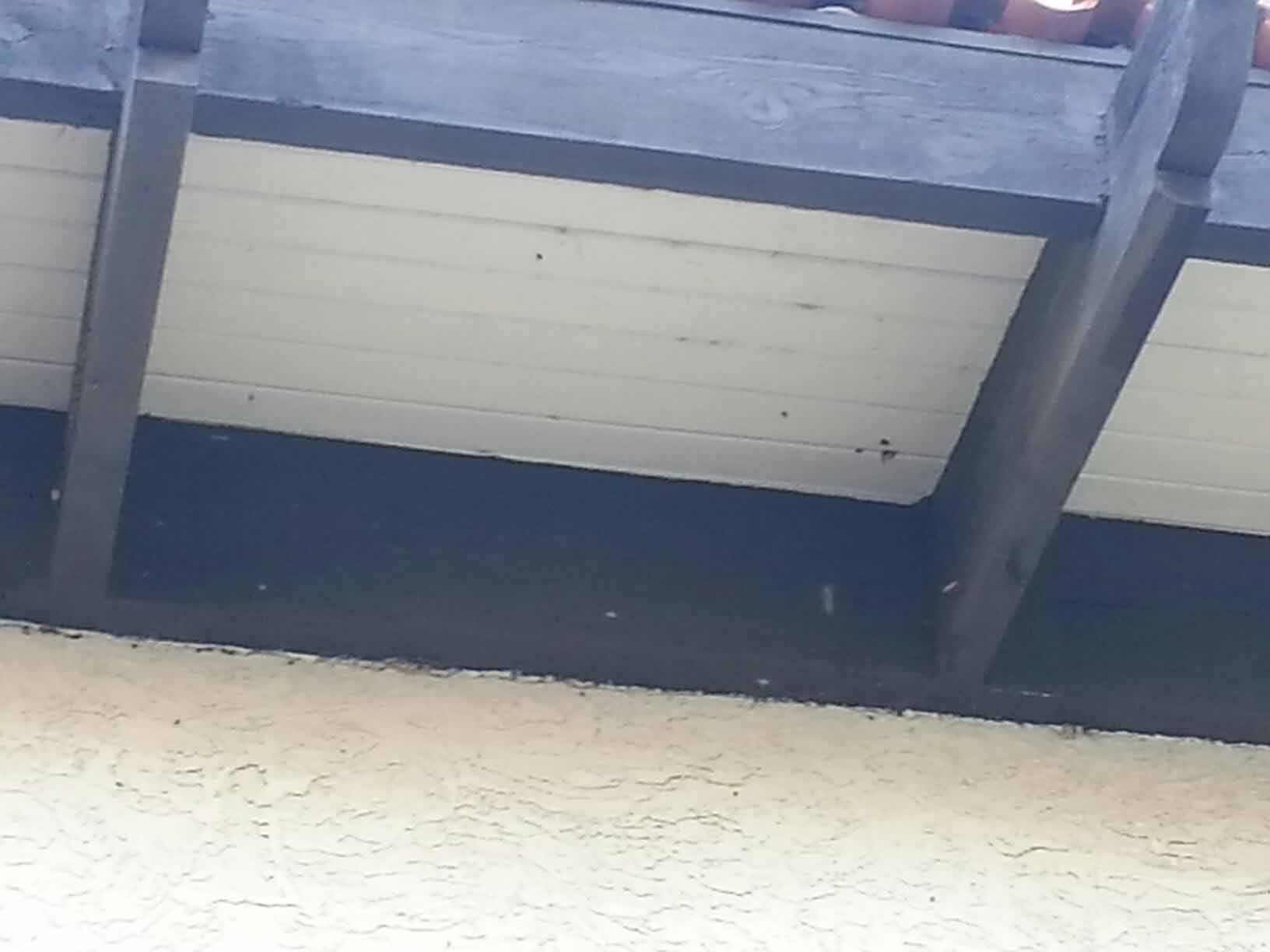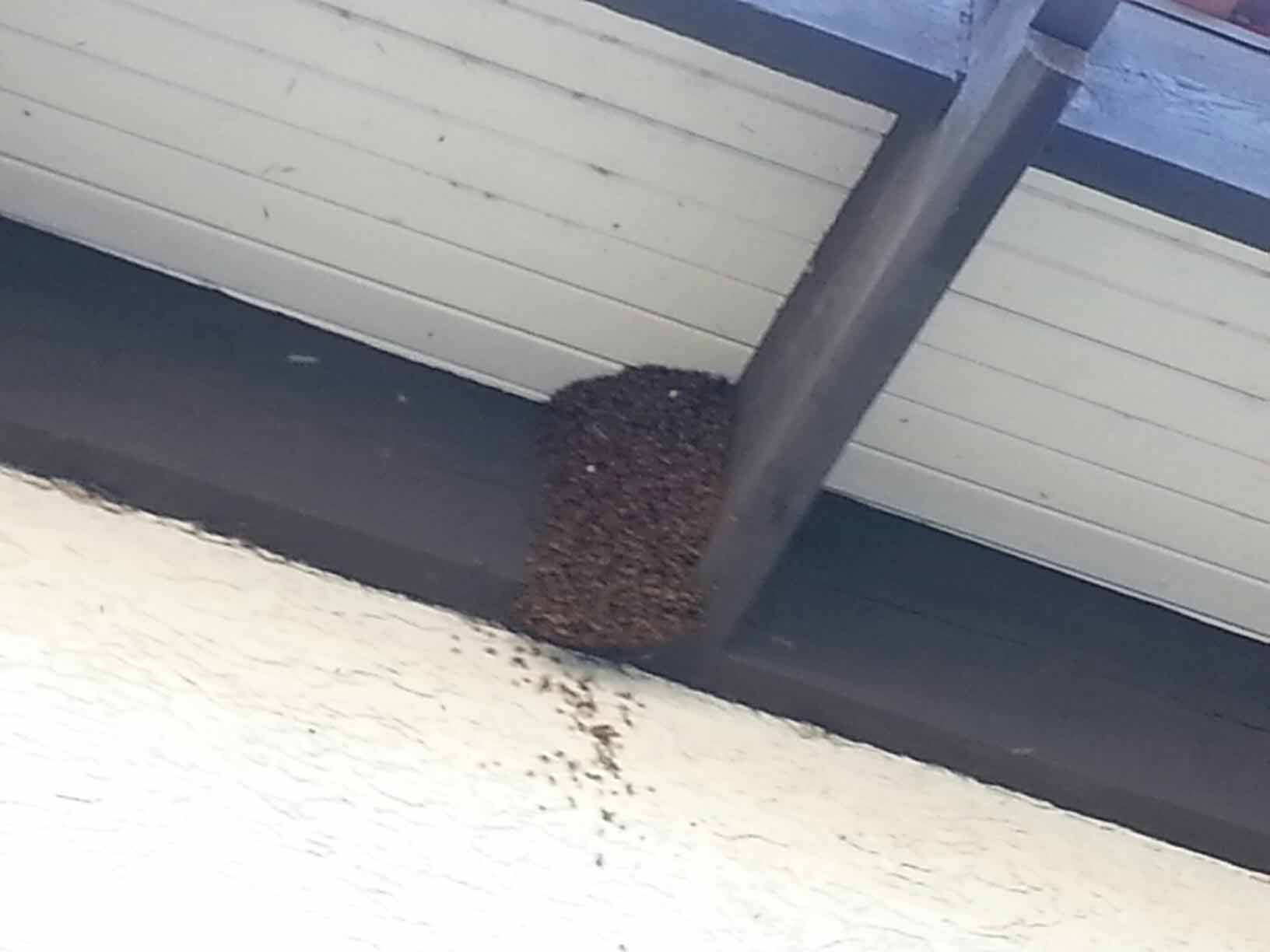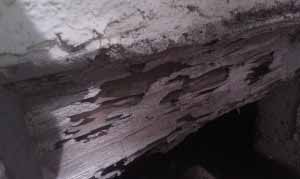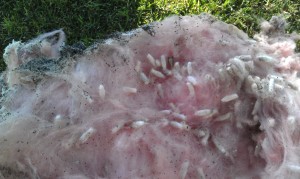Most times if you located it early enough you are probably alright but if its been there for a long time you may have some issues.
Normally I ask questions and hope for the best but from time to time you never know what might happen. I’ve seen times when not only was there a distinct smell, but there was Wax Moths everywhere. I don’t know how they do it but they got into the house and were flying and flirting around in every room. So here are my tips:
- Monthly checks of your home during Honeybee season – Africanized Honeybees swarm in Arizona as soon as it becomes warm and wills swarm right up to our mild winters.
- If you see bees going in and out it is time to call a Pest Management Professional.
- Keep an eye after the bees have been removed for any signs of leakage. The beeswax and honey will melt and secondary pests will come by for something to eat.
- Leakage may be inside or outside, pay attention to smells and spotting on walls or ceilings.
- Honey won’t mold but dead bees might so again pay attention to the smells.
Whether its honeybees, wasps, hornets or scorpions its the sting that will get you. I don’t think anyone of us enjoys accidentally getting stung by something but to many it just takes one sting and we go into anaphylactic shock. Until I read this article about the “Canadian Mayor dies after wasp attack” I didn’t or couldn’t remember that one sting might not kill you but the next might trigger that anaphylactic shock. That is why we must all be aware of our surroundings whether hiking, camping or just out for a stroll around your home.
Did you know honeybees have a stinger that is barbed, so one sting and they give up their life for the colony while wasps, hornets and scorpions can continue to sting. Paperwasps sometimes look like they are watching you as walk around or into the path where their nests is. I don’t think it is a death watch its just that they are protecting their nests. So be warned and stay clear if possible.
Here are a few tips on honeybee swarms:
- Generally speaking a swarm such as the one above will move on in time, usually 24 hours.
- When a swarm happens the bees take in honey and are therefore less aggressive, don’t provoke them.
- A swarm will send scouts out to look for an new home.
- If they land on a tree, bush or fence give them some time. If they land on your house it is better to take care of it ASAP.
- By just looking at them it is impossible to determine if they are Africanized.
- Once they establish a hive or colony they will defend with their lives.
Do you have a pool? Just like us, insects and critters need 3 things – water, food and shelter. The problem is that they don’t know the difference between a natural source of water or a swimming hole or fountain.
Here in Arizona there are many crevices from rock or cactus which may allow a swarm to take up residence close to your home. The water of your pool or fountain just becomes handy for them and they will come to your water source. So lets assume you live beside a mountain and there are bees coming there everyday, what do you do? So this becomes a bigger issue because you don’t have any idea where they are and you don’t have permission to deal with them, unless they are on your property.
I have seen people create a separate water device away from the pool, like a fountain or just a container that you replenish daily. This may be enough to pull them away from that water source to that dish or container. But to my knowledge there isn’t much I can do to keep them away from the water.
Did you know Africanized Honeybees swarm 30 more often than the European Honeybees? Spring has sprung and we are getting calls, here are a few tips:
- Don’t Panic when they decide to swarm on a tree, bush or fence. Its nature way of reproduction.
- Leave them alone, they will probably move on.
- When they swarm they take in as much honey as they can, this tends to make them a little more docile. They are not defending a hive yet, but that doesn’;t mean that they won’t sting. Use caution and Bee Safe.
Laurel Hansen Ph. D. is an Instructor in Biology from Spokane Falls Community College and is in my opinion one of the USA top research experts on Carpenter ants or probably ants in general. Some new words from this last weeks PestWorld conference in Phoenix, AZ.
Polygyne – many Queens or describing a hive or colony (social insects) that has more than one active queen.
Polydomus – many homes or living in more than one nest, as certain ant colonies.
She presented a very instructional PowerPoint on Tramp Ants – a diverse group of invasive ant species which have become established widely across the globe. As we travel, move or just transport certain things across the country we may accidentally transport certain bugs or other stuff into an Eco-system which might not do to well with a new species. One of those species has created some real problems in various places in the U.S. like the Crazy ants or Rasberry crazy ants
What has smooth galleries and small 6 sided pellets?
Drywood termites do and yes I found them under a crawlspace in downtown Mesa, Arizona.
Drywood termites are social insects that live in colonies in sound, dry wood. Each colony consists of offspring from an original pair (male and female). There are three growth stages – eggs, immatures and adults. Drywood termites are larger than local, southwestern subterranean species. Drywood termites tend to cut across wood grain destroying both the soft spring wood and the harder summer growth. Subterranean termites typically follow the grain of the wood, feeding primarily on the soft spring wood. Since they don’t live in the soil you must either get rid of the wood, if possible or fumigate. Some liquid treatments may work as long as the wood has not been painted or varnarished.
The bees are coming! How do I know?
The weather has warmed up and we had a great deal of rain, that is going to equal a lot of bug. With the temperatures today in the high 80’s you can bet the Africanized Honeybee’s who swarm more often anyway are all ready making brood to divide the colony.
The hive mind decides on the event and all of a sudden the colony is at it’s maximun and they swarm. One-half or so of the colony depart in a frenzy, they may alight on a branch and then send scouts out to find a new home. Once located the Queen will check it out and if she is happy they will move into their new home.
Here are a few facts about the swarm:
- The bees will have taken on additional honey, typically they are more docile when full. But they might still sting, just less likely to become agitated unless they are defending their home. Swarm tend to be more docile!
- The old Queen moves with the new swarm, she is fertile and more likely to succeed in a new build. The honeycomb is difficult work, so the stress on the entire colony is BIG.
- The new Queen probably not yet fertile, she will take a mating flight after the swarm leaves. It is possible for her to become a free lunch for a bird or other insect, if she fails to return the old hive still has the ability to create a Queen from previous eggs.
- Africanized honeybees swarm up to 10x more then European Honeybees.
To Bee or not to Bee? What was the question?
Usually after arriving at a home we discuss with the homeowner just how long the bees have been there. Sometimes they have no idea and sometimes they indicate just a recent event. The important issue is how long because if the hive is large the issue grows and can become a huge issue. OK small hive not a real problem, not much honey and not much by way of honeycomb = little to no bugs. But here is where the issue becomes a problem, big hive = lots of honey and honeycomb which equals a huge bug problem sometimes.
I hate to damage a wall or home just to get to the honeycomb, but sometimes it is just plain and simply something you must do! Today was this event, the homeowner noticed a lot of flying moth type critters and I quickly surmised that they were wax moths after she explained that we were just there a month or so ago. The Wax Moth is a very destructive insect pest in the beehive. The adult moth is a heavy bodied small moth about ½” to ¾” long, wings vary in color from grayish to brown and the underside is light gray. Often after a colony is killed the wax moths will invade and lay eggs and the larva will then start to demolish the honeycomb. This also happens within a bee hive if it succumbs to something that could weaken the colony.
So the question is – Do you have to open the wall or not? Sometimes and sometime not!
My point is that it isn’t always required to remove the old honeycomb depending on the age and numbers of bees involved. Sometimes it is also impossible to get to the left over colony and you may have to put up with the consequences.




